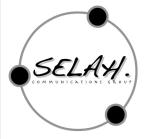TAKEN FROM:
LEADERSHIP WIRED BLOG
MIND THE GAP
“Mind the gap” is a safety announcement, advising passengers of the London Underground metro system to be careful when stepping across the opening between train doors and station platforms. The world’s oldest underground subway system, built 151 years ago, the London Underground contains several stations with rounded platforms, constructed on a curve to avoid important structural foundations in the city. The railway runs straighter than these platforms, hence the unsafe gap between the two.
The design of the London Underground illustrates a simple principle of personal development: there’s a gap between where we stand, and where we’re trying to go. To be successful on our journey, we have to be aware of this space and prudent when crossing it. We have to mind the gaps of growth.
The Assumption Gap: Assuming Growth Is Automatic
Growth doesn’t just happen. Most people expect to grow naturally, as if by osmosis they can somehow magically absorb the lessons of life. They have no plan for purposeful improvement. They want to fix their problems, but they’re not intentional about fixing themselves. Since they neglect personal growth, they never manage to navigate the growth gap that separates their present reality from their future hopes and dreams.
The Knowledge Gap: Not Knowing How to Grow
The average person spends more time planning their vacation than their personal growth. Why do people devote so little attention to such a vital concern? Oftentimes, people are unwilling to bet on themselves. They want others to invest in them, but they’re unwilling to put their own time, money, and reputation on the line in order to better their lives. If you don’t expect yourself to succeed, why should anyone else? You won’t care to know how to grow until you’re convinced that you have extraordinary potential and confident that you can fulfill it.
The Timing Gap: Sensing the Time Isn’t Right to Begin
Lots of people embrace a philosophy that’s pro-life and procrastination. They want to live it up today so they delay doing anything requiring diligent effort and hard work. However, the longer you wait to do something you should do now the greater the odds that you will never do it.
The Mistake Gap: Fearing Failure.
Whenever we dare to try anything great, we’re going to fail somewhere along the way. You’re guaranteed to mess up from time to time as a leader. Avoiding mistakes doesn’t bring success; it keeps you trapped at your current level of growth.
The Inspiration Gap: Feeling Unmotivated.
Winners do what is right and then feel good as a result. Whiners want to feel good before they do what is right. Life involves an inescapable amount of pain, but it’s far better to endure the pain of discipline today than to suffer the pain of regret later.
